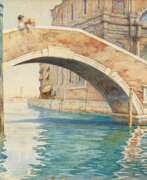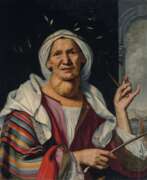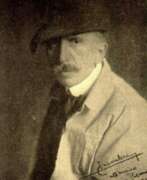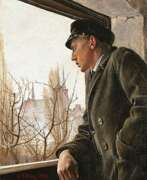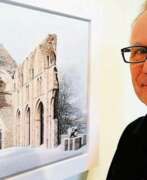Cityscape Naturalism


Leonardo Bazzaro was an Italian painter who worked mainly on landscapes and vedutas. He studied painting at the Brera Academy in Milan.
Leonardo Bazzaro is considered one of the leading representatives of Lombard naturalism.


Heinrich Christian August Buntzen was a Danish landscape painter.
His first showing was at an exhibition in Charlottenborg Palace in 1824 and, later, he won several prizes for his landscape paintings. During the 1830s, the academy purchased several of his works, as did the Royal Collection.
He was awarded the Order of the Dannebrog in 1877.
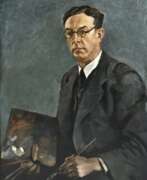

Paul Dom, born Paulus Ludovicus Carolus Dom, was a Belgian and Dutch painter and illustrator.
He studied at the Royal Academy of Fine Arts in Antwerp, lived in Belgium and the Netherlands, was granted Dutch citizenship in 1936 and lived in The Hague for the rest of his life.
Paul Dom was a versatile artist. He dabbled in drawing and painting and painted portraits, cityscapes and sketches, and genre scenes. At the same time he was a political cartoonist and illustrated books. Between 1917 and 1956 Dom illustrated hundreds of books, mostly for children.
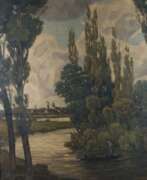

Heinrich Eberhard was a German modernist painter.
Eberhard studied at the Royal Academy of Fine Arts in Stuttgart, and was decisively influenced in his artistic development by the modernist pioneer Adolf Helzel (1853-1934). In 1920 he became a member of the Stuttgart "Üecht Group", which also included Willy Baumeister and Oskar Schlemmer, and was a member of the legendary Hölzelkreis.
Eberhard's oeuvre includes oil paintings, drawings, prints and stained glass windows and is characterized by a stylistic pluralism between expressive naturalism, cubist influences and abstraction.
During the Nazi "Degenerate Art" campaign in Germany in 1937, some of the artist's paintings were removed from galleries and destroyed, but in 1943 he was allowed to exhibit one canvas that met the tastes of the authorities. After the war, Eberhard continued to create with success, participating in exhibitions.


Arturo Ferrari is an Italian landscape painter. He studied painting at the Brera Academy in Milan.
The main theme of Arturo Ferrari's work was urban views. In a short time the artist became the "architect of the poetic and sentimental reconstruction" of old Milan.


Joseph Malachy Kavanagh was an Irish painter. He is known for his painting landscapes, seascapes, rural scenes in Ireland, France and Belgium and occasional portraits. He particularly was inspired by the landscape in and around Dublin. Kavanagh first exhibited at the Royal Hibernian Academy from 1875. In September 1881 he won the Albert Scholarship. On a trip to Brittany in 1883, he met up with a host of other young artists all of whom were influenced by the plein air naturalism of Jules Bastien-Lepage. In 1890, he published in Dublin a series of prints from etchings he created of landscape scenes from Mont St. Michel, Bruges and of "A Metallurgist" which were acquired by the British Museum in 1902. During the 1890s, he resided in Clontarf and painted numerous views around Howth and its environs, many aspects of Dublin Bay and his famous views on the sands of Portrane, Sutton, Portmarnock, Merrion and the North Bull. Another related group entails views taken along Dublin’s riverbanks.
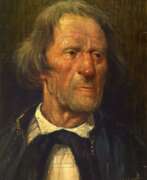

Karl Luckhardt was a painter, draughtsman and etcher. He trained as a lithographer and studied with Emil Gies at the Städel from 1907. After military service and studies in Munich, he settled in Frankfurt as a freelance artist. In the 1920s he became a popular commissioned painter, known for his depictions of rural life. Although Luckhardt fell out of favour after the Second World War, he regained recognition through public commissions and the support of friends. His detailed and sensitive depictions of landscapes, portraits and still lifes were well received by the public. While his work was popular with the public, it was often criticised by art critics for its typecasting. A retrospective in 1985 drew attention to Luckhardt's forgotten early works, including important oil studies, watercolours, drawings and etchings. His preferred subjects included landscapes, country life, animals, portraits and still lifes, with a focus on Frankfurt and its surroundings.


Adolf Luntz was a German painter, etcher, and lithographer, was known for his landscapes and figurative works. Inspired by his architect father, Viktor Luntz, Adolf joined the Vienna Academy of Fine Arts in 1892. After studying in Vienna until 1897, he became a master student of Gustav Schönleber at the Karlsruhe Academy of Fine Arts. Luntz accompanied Schönleber on various study trips and designed collectible images for the Stollwerck company in Cologne. He settled in Karlsruhe in 1905 and was a member of the German Artists' Association.


Bruto Mazzolani was an Italian painter. He studied painting at the Accademia di Belle Arti di Bologna.
Bruto Mazzolani is known for his luminous and atmospheric landscapes. Bruto Mazzolani is known for his luminous and atmospheric landscapes painted in plein air in the village of Lierna. He has participated in various exhibitions in Milan, Bologna and Ferrara.
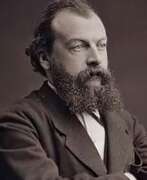

Philip Lodewijk Jacob Frederik Sadée was an artist who belonged to the Hague School.
Sadée travelled widely, painting in the Pas de Calais and traveling through France, Germany, Belgium, and Italy. Sadée exhibited in Amsterdam, Rotterdam, and The Hague in the years 1853-1903, and was elected to the Arte et Amicitiae in Amsterdam. He taught at the Academy in The Hague and numbered Hendrikus M. Horrix (1845-1923) amongst his pupils.
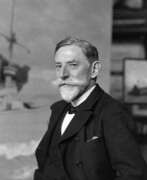

Carl Saltzmann was a German marine painter and landscape painter. He studied jewellery making between 1862 and 1866. He then developed an interest in painting and attended the academies of Fine Arts in Berlin and Düsseldorf.
Karl Salzmann was appreciated for his seascapes and representations of ships. But he also provided models for book illustrations.
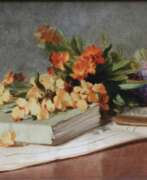

Gottlieb Schuller was an Austrian glass painter and mosaic artist. Schuller attended the Bundesgewerbeschule in Innsbruck in the art classes of the painters Heinrich Comploj and Toni Kirchmayr. From 1897 he worked at the Tyrolean Glass Painting and Mosaic Institute on Müllerstrasse in Innsbruck. From 1919 to 1944 Gottlieb Schuller was the artistic director of the Tyrolean Glass Painting and Mosaic Institute. Gottlieb Schuller found his own formal language in the form of a romantic naturalism combined with expressive elements.
